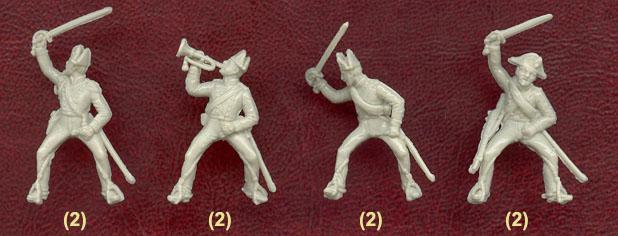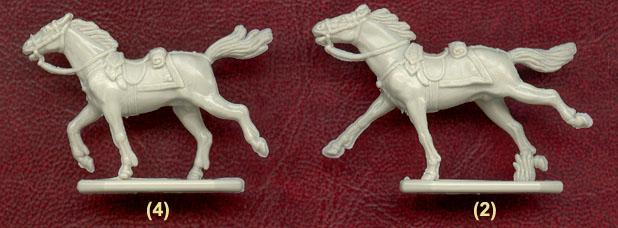Italian Carabinieri, 1848--14 figures in 7 poses and 14 horses in 4 horse poses
$12.00
Item Number: AP005
Italian Carabiniers, 1848
Date Released: 2003
Contents: 14 figures in 7 poses and 14 horses in 4 horse poses
Material: Plastic (Medium Consistency)
Color: Light Grey
Average Height: 23 mm (= 1.66 m)
1848 was a tumultuous year for many parts of Europe, not least the Italian peninsular, for it was in that year that the Kingdom of Sardinia (aka 'Piedmont') and her allies fought to evict Austria from the region. Later known as the First War of Independence, the Austrians were victorious, but initially lost a number of engagements including one at Pastrengo on 30th April. That action is perhaps most notable for the charge of around 280 Carabinieri, when they saved the King and the future king Victor Emmanuel from capture. This is appropriate as the Carabinieri had the role of royal bodyguard when he was on campaign, although some were attached to the field army in their more normal role of gendarmerie, acting as military police. This set depicts those famous troops at that important moment in their history, when they suddenly found themselves having to behave as military personnel rather than police.
By the mid 19th century Europe's armies were slowly losing the tight formal uniforms with which the years of Napoleon had been decorated, and were adopting looser and more practical styles. For Sardinia this occurred during the mid 1840's, when the coatee gave way to the more comfortable tunic. However the Royal Carabinieri were allowed to retain their traditional coats with tails, and it is in these rather old-fashioned garments that these figures are correctly clothed. Of course, they also wear the characteristic bicorn, which can still be seen in the dress uniform today, although here it is without the oilskin cover, which may have been worn at Pastrengo. Most have their cape correctly rolled over the right shoulder and their carbine by their side, although naturally none are being used. In short, these figures are entirely accurate, and if foul weather covers are required then little effort would be necessary to convert them.



